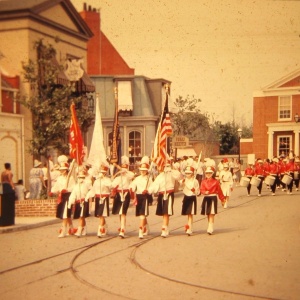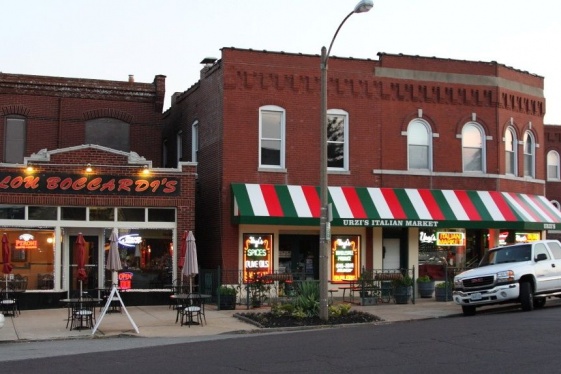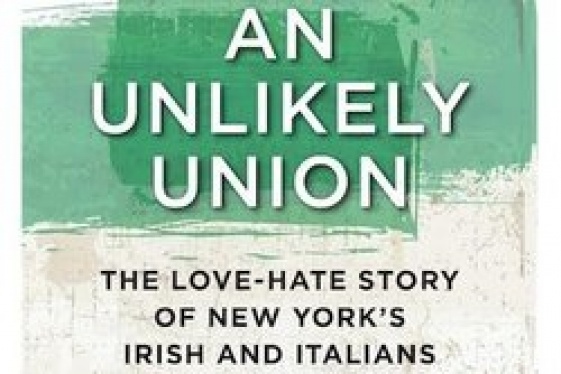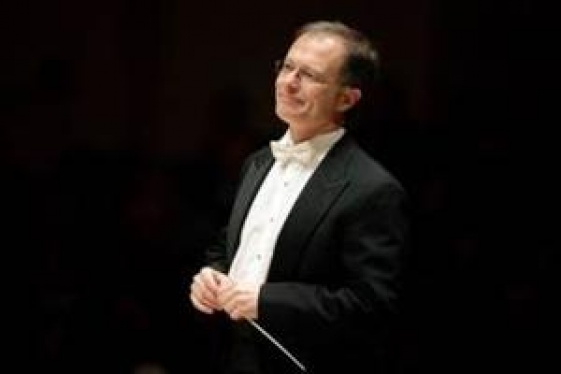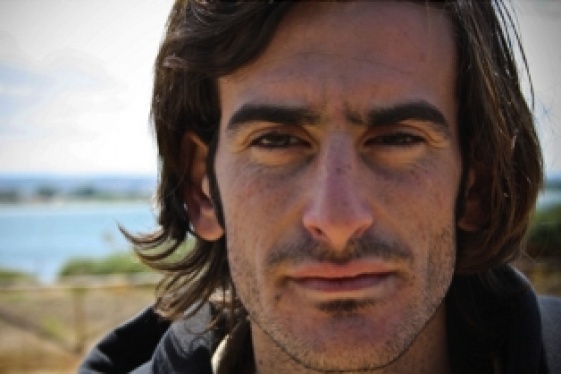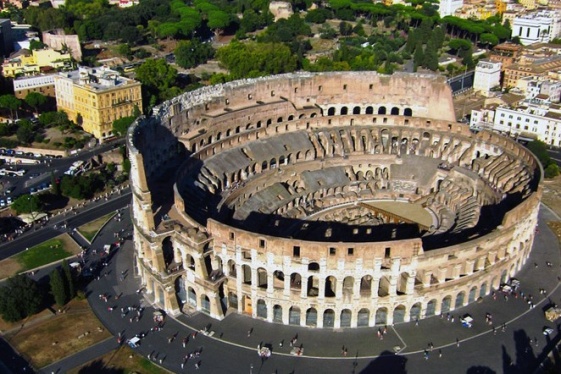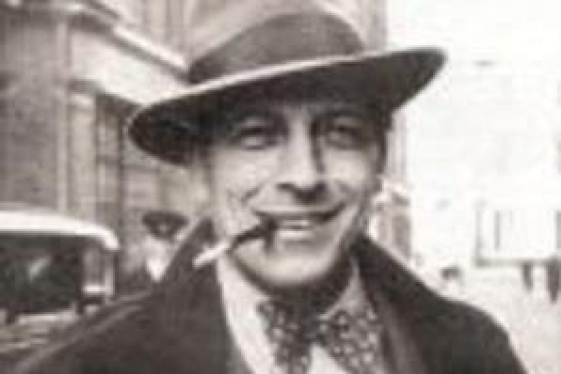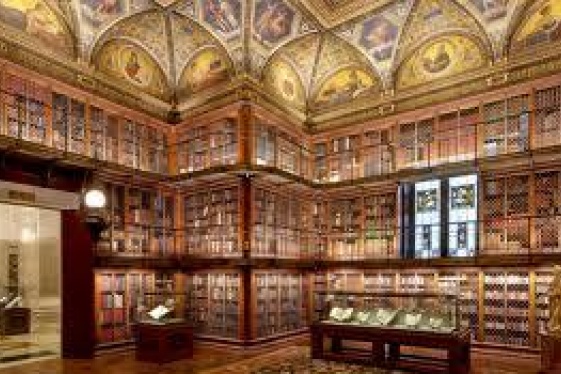
Mike Virgintino (Author of "Freedomland U.S.A.: The Definitive History")
Gli italoamericani di Freedomland U.S.A., il parco di divertimenti di New York dedicato agli Stati Uniti

Sixty years ago the United States decided to open up an amusement park dedicated to its history. They chose an area in the Bronx to build it, and called it “Freedomland U.S.A.”, but soon the nickname "Disneyland of the East" was coined.
Just as they had done for America, many Italian Americans were busy designing and building the amusement park and then working there. And today it is an Italian American, Mike Virgintino, who tells their story and with it the story of Freedomland U.S.A.: in a book called "Freedomland U.S.A.: The Definitive History", and in this interview, for which we thank and welcome him on We the Italians
Mike, first of all: what’s your story?
My parents came from the South Bronx. Raphael F. Virgintino lived at 436 East 145th Street. My paternal grandfather was from the Sassi in Matera, Basilicata; and my grandmother lived her early years in Laurenzana, in the Potenza province, also in Basilicata. My mother, Jennie Tomao, resided at 335 East 148th Street. Her parents had arrived from Esperia, in the province of Frosinone, Lazio.
My parents met as teenagers. My father was drafted into the U.S. Navy near the end of World War II. After his service, he and my mother were married during 1947. I came along a handful of years after my parents had purchased a new brick row house in the northeast section of the borough.
The developing neighborhoods in this section of the city featured Italian and Irish families of the Catholic faith along with Jewish residents who traced their roots to various European countries. Families of other nationalities also settled in the old and new private homes and in the small apartment buildings. Freedomland U.S.A. soon rose on 205-acres of marshland in the nearby valley. At the time, everyone in this booming community referred to the area that surrounded the recently constructed New England Thruway and the older Hutchinson River Parkway as “the valley.”
Please tell us how Freedomland U.S.A. was born
New York City has been a melting pot since the arrival of the first Europeans. Initially, Dutch, English and Scots blended their daily lives with Native Americans. Then, in waves of legal immigration during the 1800s and 1900s, Italians and many others arrived in the city.
A theme park during the early 1960s (its debut was 60 years ago on June 19, 1960) mirrored New York's historic crossroads of cultures. Freedomland U.S.A. featured designers, artists, construction workers and employees from all backgrounds, and the popular entertainers of the day who appeared at the park also were of diverse nationalities, cultures and religions. Freedomland U.S.A., America’s theme park, occupied previously undeveloped Bronx marshland. When it was razed, the park was replaced by the Co-op City housing development and its shopping center.
The new theme park was dubbed the “Disneyland of the East” and “The World’s Largest Entertainment Center.” Freedomland provided thousands of jobs for Bronx residents and for others throughout the city, Westchester County and Long Island. A significant number of out-of-town employees also punched their tickets at the park.
Freedomland U.S.A. provided unique family entertainment focused on specific periods of American history. Created as a movie backlot by several hundred artists and designers who were associated with other parks, Hollywood and Broadway, Freedomland featured the story of America through attractions located in its seven themed areas.
The areas were: Little Old New York of the late 1800s; Old Chicago of the 1871 fire and vintage steam trains; The Great Plains, with its fort and also a farm sponsored by Borden that featured Elsie the Cow; San Francisco of 1907 with Fisherman’s Wharf, the Barbary Coast, the famous earthquake, and a boat trip through Lewis and Clark territory; The Old Southwest with its saloon, western stage shows and mine caverns; New Orleans with carnival celebrations and the centennial commemoration of our Civil War; and Satellite City, which embraced the present and future space race.
Hundreds of people were involved with the creation and construction of Freedomland. A significant number of them were of Italian descent, as were many teenagers and men and women of various ages who became park employees. Italians also were among the many celebrity entertainers who performed at the park.
Can you please provide us some names of Italians who worked hard to build and create this beautiful place?
Among Freedomland’s designers was Paul Ashley (neé Pasquale Sposeto) of Des Moines, Iowa. He was the second of 10 children and the first son of Italian immigrants. Ashley became a renowned sculptor, model maker and puppeteer whose creations were featured in the Christmas windows of Macy’s Manhattan flagship store.
Baby boomers from the New York area will recall Ashley’s puppets on The Rootie Kazootie Club national television show and the local children’s shows hosted by Sandy Becker and Chuck McCann. His artistic contributions to Freedomland included character designs and effects for the park’s dark rides and other attractions.
As Ashley and his fellow artisans completed their assignments, construction began with the park’s August 26, 1958 groundbreaking ceremony. A relatively young journalist at the time, Gay Talese, covered the event for The New York Times. Talese wrote: “Out of a cloud of dust and thundering hoofbeats in the Bronx yesterday rode two cowboys, four showgirls, a bulldozer ballet and a posse of press agents—all hired to publicize what they called the ‘greatest outdoor entertainment center in the history of man.’”
Prior to and following that ceremony, Peter Laterza and other truck drivers transported a quarter million yards of fill soil to the property to raise and grade the marshland. Laterza recalled that the city was in the middle of a building boom that made soil readily available from about 25 different construction sites.
Park construction involved many local companies, including Naclerio Pelham Contractors, which installed more than 50 miles of pipe and wire. Benedict DePietro, a Naclerio employee, assisted with the preparation of several Freedomland waterways.
“We were contracted to supply equipment to the construction company on the Freedomland site,” said DePietro. “I operated equipment there for six to 12 months. I excavated the Great Lakes to a certain depth for the paddle boats and then the rails were put in to guide the boats. I also worked on building the dock for the boats. Then, we worked on the Northwest Fur Trapper ride. A fellow who supervised this attraction had worked on a similar Disneyland ride (Jungle Cruise). We had no experience in this area, but we got the hang of it. He gave us the plans and we did the best we could. He took a look and he was so pleased to see what we had done.”
Another Italian-owned business, Lawrence Labriola Nurseries of Scarsdale and Armonk in Westchester County, also was associated with the creation of Freedomland. The nursery provided more than 50,000 trees and shrubs for the theme park landscape.
Once inaugurated, how was working at Freedomland for the Italian Americans?
As Freedomland opened, the employees who operated the park were slotted within 54 professional categories, some of which were not listed by big city employment agencies at the time. Many employees were required to possess unique skills, including buffalo wrangler, carrousel horse jeweler, totem pole carver, pretzel bending, seal keeping and can-can dancing. While New Yorkers of Italian descent may have been qualified for a few of these positions, they mostly filled the more conventional jobs at the park.
The Adamo family, which traces its origins to Naples, provided three employees to Freedomland. John Adamo (engineer for the authentic steam engines that traveled between Old Chicago and San Francisco) and Salvatore Adamo (tugboat pilot in Little Old New York) were brothers. Frank Adamo (John’s son) became the park’s director of maintenance and operations. He was involved with the park’s construction and as the park was razed for the housing development. Adamo also was instrumental in securing the site along the prominent roadway (Bartow Avenue) within the present residential and commercial community and for the placement of the Freedomland U.S.A. commemorative plaque. Adamo procured the bolder on which the commemoration is mounted, and he participated in the unveiling ceremonies on August 17, 2013.
Freedomland’s guest parking lot was located north of today’s Bartow Avenue. As an attendant, Michael Barretti initially directed and parked vehicles. He then “graduated” to driving the trams to transport guests to and from the lot to the park entrance. Barretti also worked the toll gate, including the free pass lane where celebrities and acts entered the park. Eventually, he learned to operate a Freedomland tugboat.
Just weeks before Freedomland made its debut, Connie Capobianco had graduated from high school. After she and others put the finishing touches on the park eateries in anticipation of opening day, Capobianco accepted a food service position at the Creole Café, the pancake restaurant in the New Orleans themed section. Her older brother, Faust, also was employed by the park. He managed the barn in The Great Plains area that was sponsored by Borden. He took care of Elsie and her calves along with the animals in the petting zoo.
To address the health needs of Freedomland employees and guests, Dr. Ralph Lucariello extended his services to park management. A young physician at the time, Dr. Lucariello was contacted by a doctor in Manhattan who knew William Zechendorf, Sr., the owner of the marshland that featured Freedomland. The Manhattan doctor had been asked to serve the medical needs for the park, but the distance proved prohibitive for the doctor. He contacted Dr. Lucariello, who had established his private practice in the north Bronx, and he offered Dr. Lucariello the opportunity at Freedomland.
“I never met him,” said Dr. Lucariello, a board-certified internist who has been affiliated with various New York health care facilities, “and can’t recall his name, how he found me, or why he called me. During the five years of the park, I was responsible for the medical check-ups for employees and occasionally was called to the park to address a medical issue.”
To accommodate thousands of hungry park guests and employees, more than 20 restaurants and snack bars were featured throughout Freedomland’s history-themed sections. As a teenager, Dennis Orzo was employed by the Brass Rail restaurant chain responsible for the park’s food concession. The company had operated restaurants and corporate food service throughout New York City for decades. Orzo was assigned to the Jewish delicatessen that had signed a contract to establish a shop in the park.
“I worked at Freedomland the second year (1961) it was open,” said Orzo. “I was assigned to Shuntz Delicatessen in Little Old New York. I was a bus boy, cleaning tables and floors at the deli. Sometimes I worked serving customers their pastrami and corned beef sandwiches and cheesecake.”
Pato Bakery also contracted for shop space at Freedomland. The popular Bronx retailer from Lydig Avenue in the Pelham Parkway neighborhood was owned by Solomon Pato. His shop in Little Old New York was patronized daily by guests, employees and character actors in costume.
Another teenager was responsible for several odd jobs during the one season he worked at Freedomland. Bob Scumaci said the best job that summer was the week he was assigned to the backstage door at the entertainment venue in Satellite City known as the Moon Bowl. More than 150 celebrity musicians and entertainers performed on that stage before millions of park guests.
“I saw Count Basie and Jack Jones," said Scumaci, referring to the orchestra leader and popular singer. "Patti Page played cards with the stagehands between performances and Donald O’Connor gave me a $10 tip and an autograph. When Bobby Darin (Bronx-raised Walden Robert Cassotto) was there, he needed an oxygen tent. I reminded people not to smoke and I also got tea for him. The phone rang one day, and a woman wanted to speak with him. It was his wife, Sandra Dee! I wouldn’t wash my hand that picked up the phone for a week.”
Many other teens and adults of Italian descent were hired over the park’s lifespan for its many diverse jobs that included security, fire brigade, office positions, attraction operators and as seamstresses in Freedomland’s wardrobe department.
Please tell us something about the Italian American entertainers at Freedomland…
Freedomland management booked celebrity performers during each season to attract audiences with interests that extended beyond entertaining history lessons. The park featured musicians, singers, comedians and other entertainers from all backgrounds, including performers with Italian roots.
Trumpeter, bandleader and recording artist Ray Anthony (Raymond Antonini) appeared with his orchestra. Singers at Freedomland included Tony Bennett (Anthony Dominick Benedetto), Dion DiMucci, Connie Francis (Concetta Rosa Maria Franconero) and Jerry Vale (Genaro Vitaliano). Little Peggy March (Margaret Annemarie Battavio) from Lansdale, Pennsylvania, whose song I Will Follow Him rocketed to number one on the U.S. music charts, appeared at Freedomland as a 15-year-old on June 8-9, 1963. Frankie Valli and The Four Seasons performed at Freedomland during the week of April 16, 1963 and headlined May 23-24, 1964.
Paul La Valle (neé Joseph Usifer), a son of Italian immigrants who was raised in Beacon, New York, was Freedomland’s music director. Educated at the Juilliard School, he enjoyed a long music career from the network radio studios of the 1940s through the 1964-1965 New York World's Fair and Radio City Music Hall.
Johnny Roventini of Brooklyn was another son of Italian immigrants who appeared at the park. He was known as the television bellhop in the Philip Morris cigarette advertisements (“Call for Philip Morris”). Roventini rode in a convertible in a Freedomland parade during his one documented appearance at the park.
What Happened To Freedomland?
Despite its popularity, its unique history-themed attractions and the many celebrities who appeared at the park, Freedomland lasted just five seasons (1960-1964). The park had been conceived and built by C.V. Wood and his Marco Engineering Company. Known to many as Woody, he was Disneyland's first employee and he brought Walt Disney's imagination to life by leading the team that built that park only a few years before the debut of Freedomland. He also created theme parks and other venues across the country. Several continue to prosper, including Six Flags Over Texas and the community of Lake Havasu in Arizona.
Unknown to Woody and the general public at the time, landowner William Zeckendorf, Sr., local politicians, city planners and construction unions considered the park a "placeholder" until property variances permitted significant development on the extensive Bronx marshland. The variances provided the green light for the construction of Co-op City, the largest cooperative housing community in the world. The shopping center was added during the 1980s and the indoor mall on the site was constructed on the remaining undeveloped land during 2012.
The story about Freedomland has been documented during recent years in books, on social media (Instagram, Twitter and Facebook), in newspaper, magazine and online articles, and on DVDs and websites. While select material, unfortunately, contains some inaccuracies still to be corrected, and documentation remains elusive for significant parts of the story, ongoing research about the history of the park and the experiences of its creators, builders, employees, entertainers and guests gradually is leading us toward a more complete story about Freedomland U.S.A.
You may be interested
-
“The Hill” St. Louis’ Little Italy
When the fire hydrants begin to look like Italian flags with green, red and white stripes,...
-
An Unlikely Union: The love-hate story of Ne...
Award-winning author and Brooklynite Paul Moses is back with a historic yet dazzling sto...
-
Cathedral of St. John the Divine, Oratorio S...
For the first time ever, The Cathedral of St. John the Divine, in collaboration with the O...
-
Davide Gambino è il miglior "Young Italian F...
Si intitola Pietra Pesante, ed è il miglior giovane documentario italiano, a detta della N...
-
Exciting Palatine. Interview with Clementina...
You can tell she fills with excitement when she has the chance to show an important archae...
-
Garibaldi-Meucci Museum to Celebrate Ezio Pi...
On Sunday, November 17 at 2 p.m., Nick Dowen will present an hour-long program on the life...
-
Italian Master Drawings From The Morgan (Onl...
The Morgan Library & Museum's collection of Italian old master drawings is one of the...








